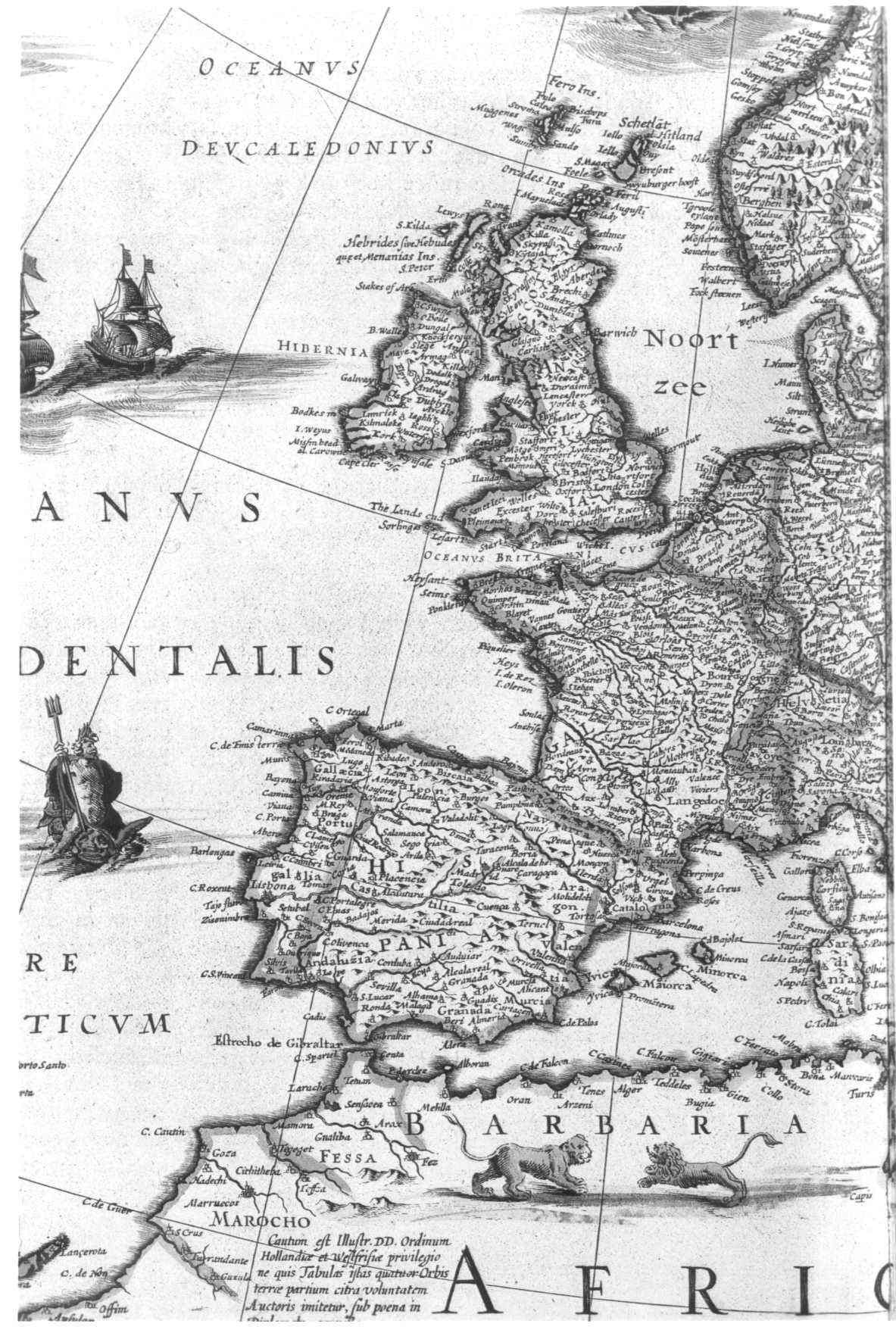Putting the State on the Map: Cartography, Territory, and European State Formation
Comparative Studies in Society and History, vol. 41, no. 2, 1999, pp. 374-411
 When
I wrote this article, the historical sociology of state formation in
Europe focused on explaining how the state's power and resources
increased over the centuries. Thus the state was treated as an entity.
By contrast, I wanted to understand a more basic question: how people
came to conceive the state as an entity—how the
state emerged in the mind, as it were. I chose to investigate
historical cartography, for maps show us how people imagined the space
in which they lived. From the Renaissance onwards, techniques of
surveying and map-making provided a new way of conceiving political
power and enabled rulers to gain new knowledge of the space over which
they claimed to rule. This, I argue, was the basis of our modern notion
of a territorial state—homogeneous space enclosed by a linear boundary.
Nevertheless, this transformation was very gradual. When we examine
published maps of Europe since the sixteenth century, what is
surprising is that they do not attempt to depict consistent or accurate
state boundaries. The modern image of a jigsaw of territorial states
emerged only at the beginning of the nineteenth century. This warns us
of the danger of anachronism, of projecting our notion of the state
back into the past.
When
I wrote this article, the historical sociology of state formation in
Europe focused on explaining how the state's power and resources
increased over the centuries. Thus the state was treated as an entity.
By contrast, I wanted to understand a more basic question: how people
came to conceive the state as an entity—how the
state emerged in the mind, as it were. I chose to investigate
historical cartography, for maps show us how people imagined the space
in which they lived. From the Renaissance onwards, techniques of
surveying and map-making provided a new way of conceiving political
power and enabled rulers to gain new knowledge of the space over which
they claimed to rule. This, I argue, was the basis of our modern notion
of a territorial state—homogeneous space enclosed by a linear boundary.
Nevertheless, this transformation was very gradual. When we examine
published maps of Europe since the sixteenth century, what is
surprising is that they do not attempt to depict consistent or accurate
state boundaries. The modern image of a jigsaw of territorial states
emerged only at the beginning of the nineteenth century. This warns us
of the danger of anachronism, of projecting our notion of the state
back into the past.

Errata:
without giving me any opportunity to make final revisions, or even to
see the page proofs, the journal printed this essay—having introduced
over thirty errors (virtually every French word is wrongly spelled).
Michael Biggs, Department of Sociology, University
of Oxford
 When
I wrote this article, the historical sociology of state formation in
Europe focused on explaining how the state's power and resources
increased over the centuries. Thus the state was treated as an entity.
By contrast, I wanted to understand a more basic question: how people
came to conceive the state as an entity—how the
state emerged in the mind, as it were. I chose to investigate
historical cartography, for maps show us how people imagined the space
in which they lived. From the Renaissance onwards, techniques of
surveying and map-making provided a new way of conceiving political
power and enabled rulers to gain new knowledge of the space over which
they claimed to rule. This, I argue, was the basis of our modern notion
of a territorial state—homogeneous space enclosed by a linear boundary.
Nevertheless, this transformation was very gradual. When we examine
published maps of Europe since the sixteenth century, what is
surprising is that they do not attempt to depict consistent or accurate
state boundaries. The modern image of a jigsaw of territorial states
emerged only at the beginning of the nineteenth century. This warns us
of the danger of anachronism, of projecting our notion of the state
back into the past.
When
I wrote this article, the historical sociology of state formation in
Europe focused on explaining how the state's power and resources
increased over the centuries. Thus the state was treated as an entity.
By contrast, I wanted to understand a more basic question: how people
came to conceive the state as an entity—how the
state emerged in the mind, as it were. I chose to investigate
historical cartography, for maps show us how people imagined the space
in which they lived. From the Renaissance onwards, techniques of
surveying and map-making provided a new way of conceiving political
power and enabled rulers to gain new knowledge of the space over which
they claimed to rule. This, I argue, was the basis of our modern notion
of a territorial state—homogeneous space enclosed by a linear boundary.
Nevertheless, this transformation was very gradual. When we examine
published maps of Europe since the sixteenth century, what is
surprising is that they do not attempt to depict consistent or accurate
state boundaries. The modern image of a jigsaw of territorial states
emerged only at the beginning of the nineteenth century. This warns us
of the danger of anachronism, of projecting our notion of the state
back into the past.